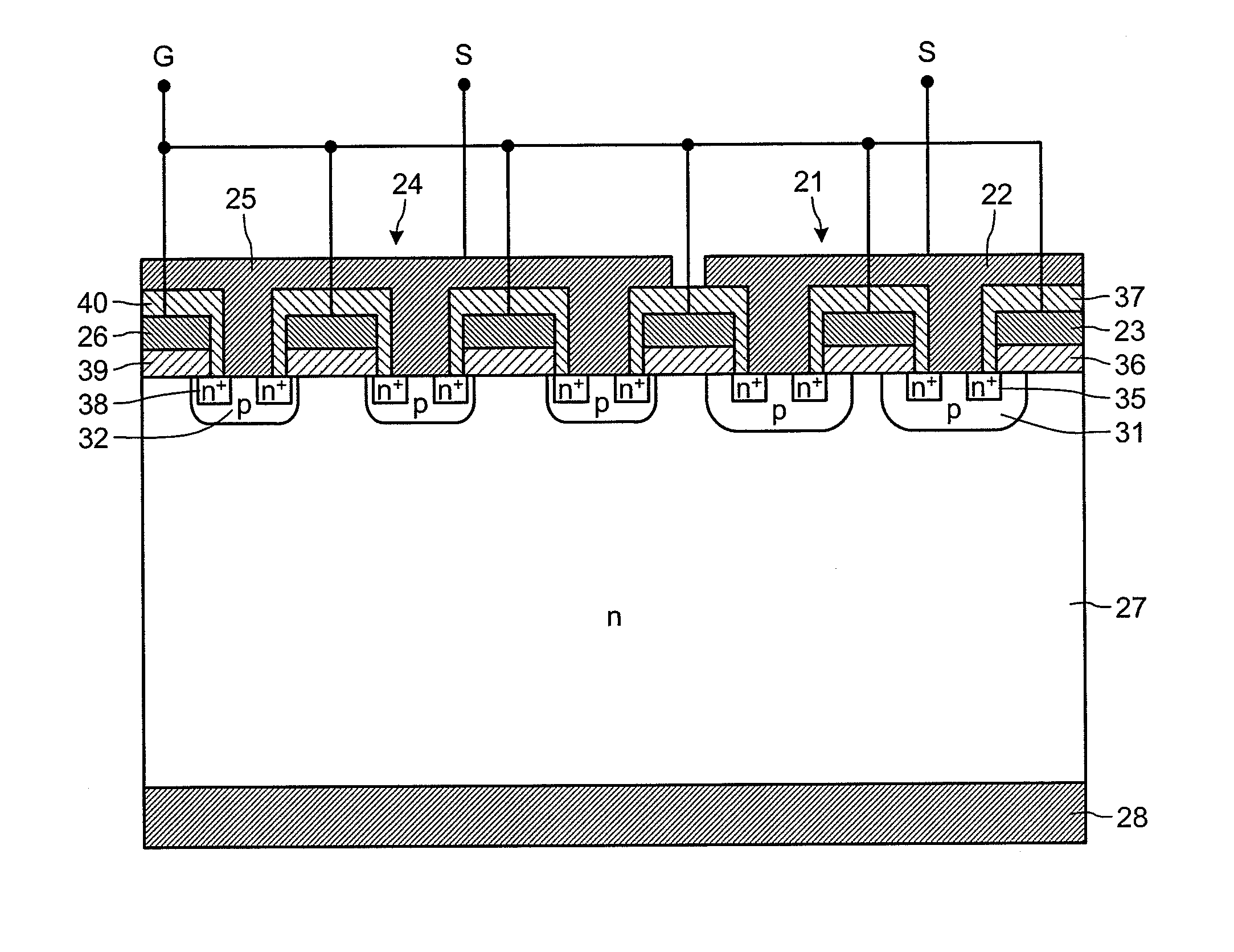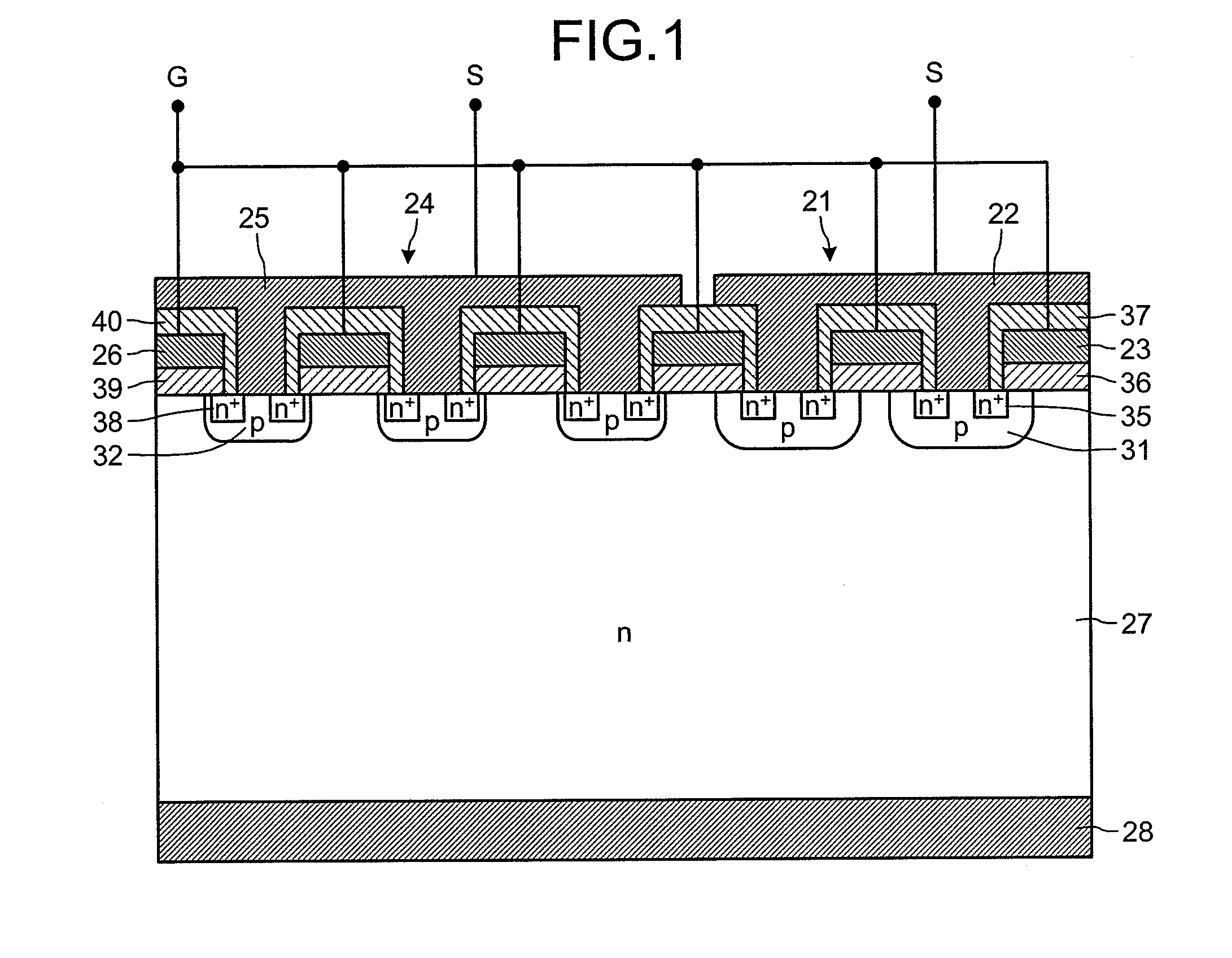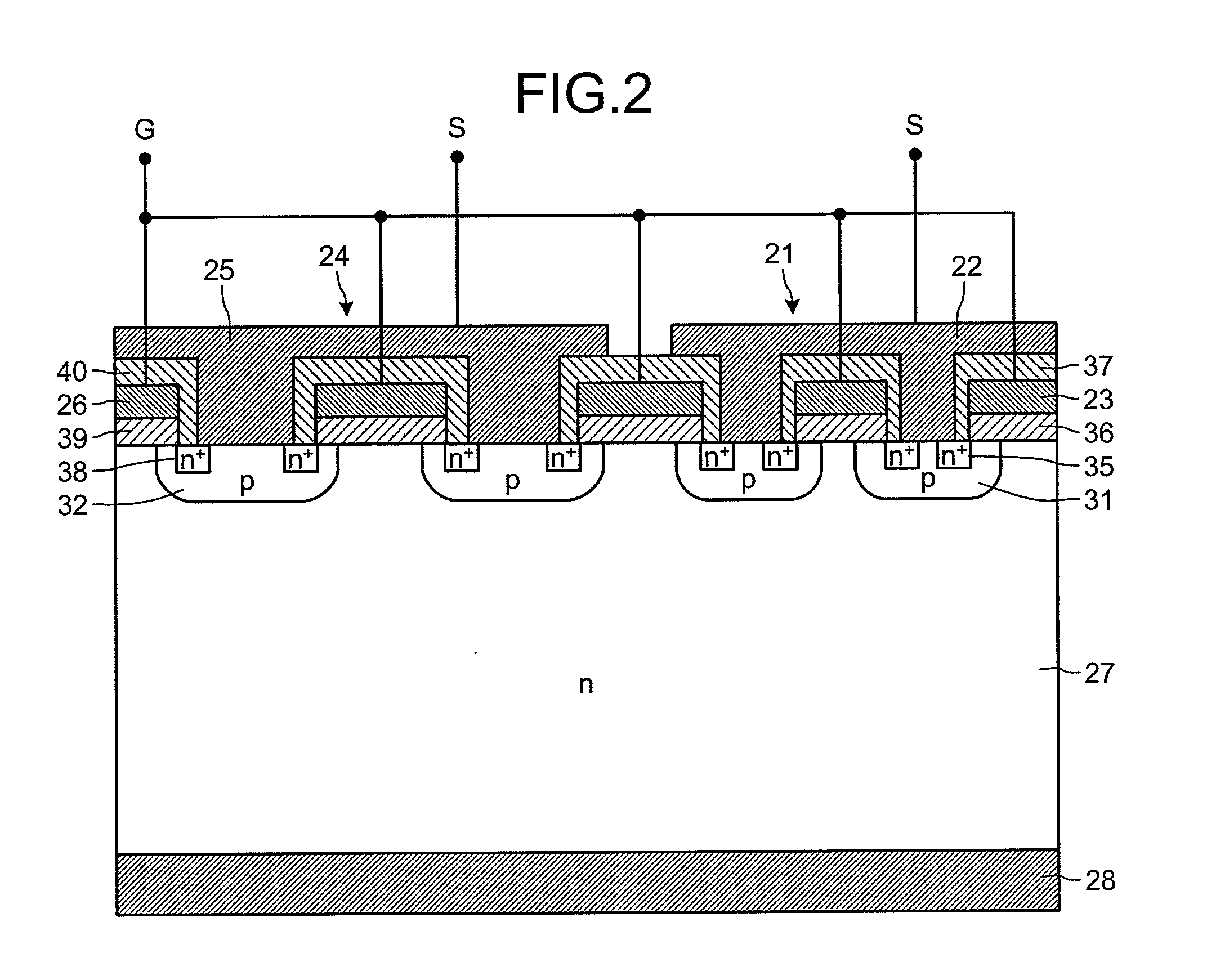Semiconductor device
a technology of semiconductor devices and semiconductors, applied in semiconductor devices, diodes, electrical apparatus, etc., can solve problems such as device damage, non-uniform current or current oscillation, delay in protection or unstable oscillation,
- Summary
- Abstract
- Description
- Claims
- Application Information
AI Technical Summary
Benefits of technology
Problems solved by technology
Method used
Image
Examples
tenth embodiment
[0130]FIG. 10 is a plan view illustrating a configuration of a semiconductor device having a current detection function according to a tenth embodiment. FIG. 11 is a cross-sectional view of the semiconductor device having a current detection function according to the tenth embodiment. As depicted in FIG. 11, the semiconductor device having the current detection function includes a main device 24 and a current detection device 21 separated from the main device 24. The current detection device 21 is formed in a current detecting structure region of the same substrate as the main device 24. Therefore, the current detection device 21 and the main device 24 share an n-drift layer 27, a p-collector layer 42, and a collector electrode 28.
[0131]In FIG. 11, the main device 24 and the current detection device 21 are about the same size. However, actually, the surface area of the current detection device 21 is several tenths smaller than that of the main device 24. Therefore, reflecting the ra...
eleventh embodiment
[0137]FIG. 12 is a cross-sectional view of a semiconductor device having a current detection function according to an eleventh embodiment. As depicted in FIG. 12, according to the eleventh embodiment, the current detection device 21 has a third dummy trench IGBT structure 103 compared with the tenth embodiment. In the current detection device 21, the dummy trench electrodes 85 are not connected to the trench gate electrodes 83 and 84 but are connected to the p-type floating layer 81 in a region that is not depicted in the drawing. As a result, potential of the current detection device 21 becomes stable. The p-type floating layer 81 is also connected to the emitter electrode. Accordingly, potential of the p-type floating layer 81 becomes identical to potential of the emitter electrode 22, the p-type floating layer 81 not being electrically isolated from the emitter electrode 22. In this way, the withstand voltage of the current detection device 21 becomes higher than the main device ...
twelfth embodiment
[0138]FIG. 13 is a cross-sectional view illustrating a semiconductor device having a current detection function according to a twelfth embodiment. In the twelfth embodiment, the current detection device 21 has a fourth dummy trench IGBT structure 104 compared with the tenth embodiment and the eleventh embodiment. In the current detection device 21, the dummy trench electrodes 85 are electrically connected to the emitter electrode 22. Therefore, the dummy trench electrodes 85 and the emitter electrode 22 have identical potential and thus, potential of the current detection device 21 becomes stable. The p-type floating layers 81 are separated from the emitter electrode 22 by the interlayer insulator 37. Thus, the p-type floating layers 81 are electrically isolated (floating) from the emitter electrode 22. In this way, the withstand voltage of the current detection device 21 becomes higher than the main device 24.
PUM
 Login to View More
Login to View More Abstract
Description
Claims
Application Information
 Login to View More
Login to View More - R&D
- Intellectual Property
- Life Sciences
- Materials
- Tech Scout
- Unparalleled Data Quality
- Higher Quality Content
- 60% Fewer Hallucinations
Browse by: Latest US Patents, China's latest patents, Technical Efficacy Thesaurus, Application Domain, Technology Topic, Popular Technical Reports.
© 2025 PatSnap. All rights reserved.Legal|Privacy policy|Modern Slavery Act Transparency Statement|Sitemap|About US| Contact US: help@patsnap.com



